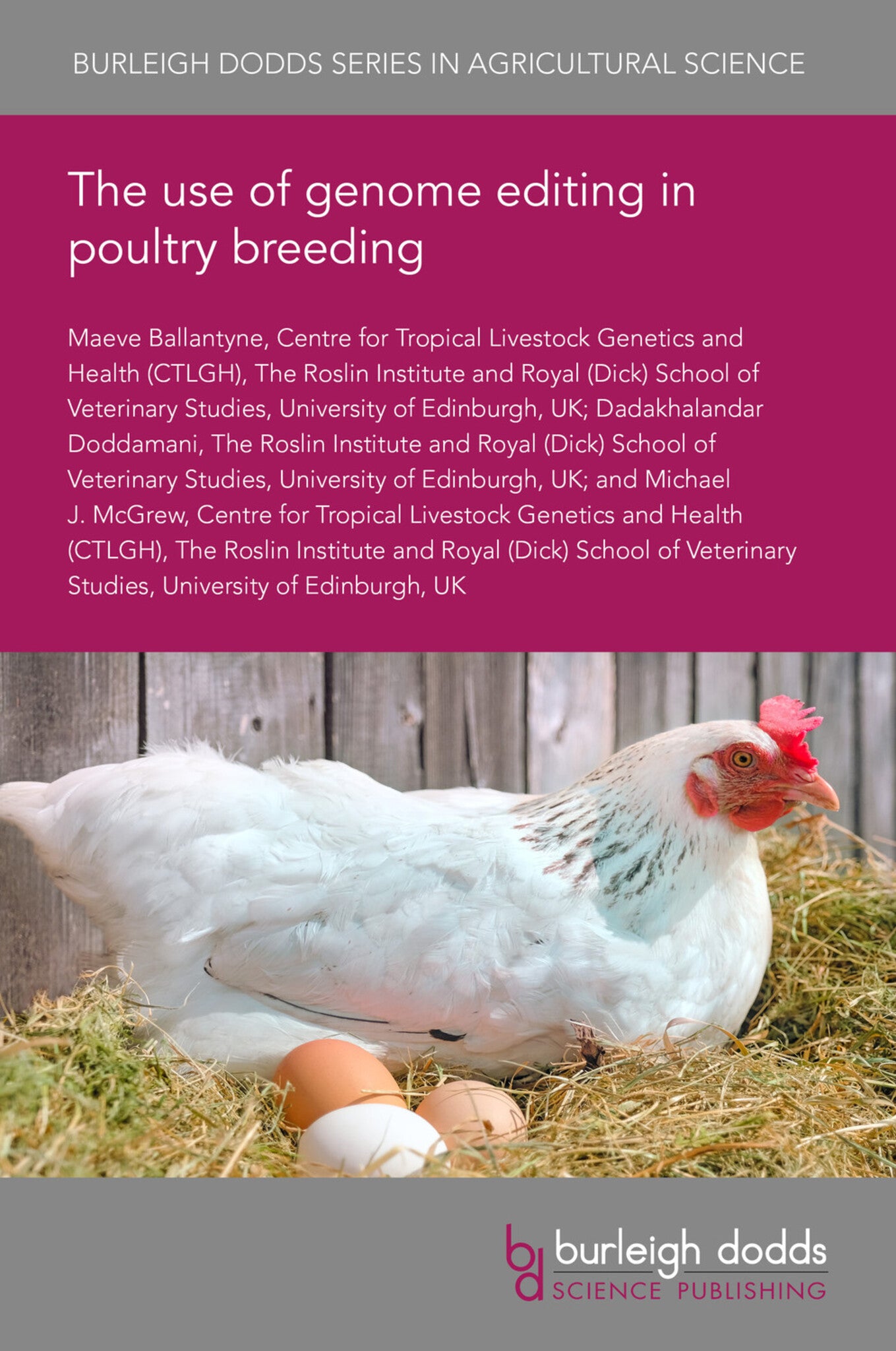We're sorry. An error has occurred
Please cancel or retry.
The use of genome editing in poultry breeding

Some error occured while loading the Quick View. Please close the Quick View and try reloading the page.
Couldn't load pickup availability
- Format:
-
20 July 2020


TECHNOLOGY & ENGINEERING / Agriculture / Animal Husbandry, Poultry farming, TECHNOLOGY & ENGINEERING / Agriculture / Sustainable Agriculture, Sustainable agriculture, Animal breeding

1 Introduction 2 Mammalian transgenesis 3 Avian transgenesis 4 Transformative technologies: genome editors 5 Key challenges in genome editing for commercial poultry 6 Current potential applications of genome editing for poultry 7 Avian influenza virus: a major pathogen for poultry 8 Future trends and conclusion 9 Acknowledgements 10 Where to look for further information 11 References



